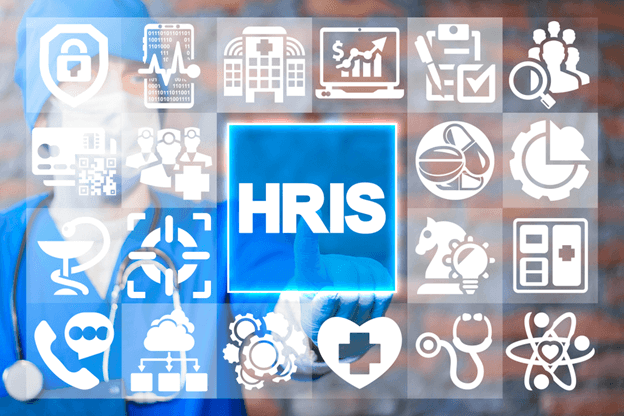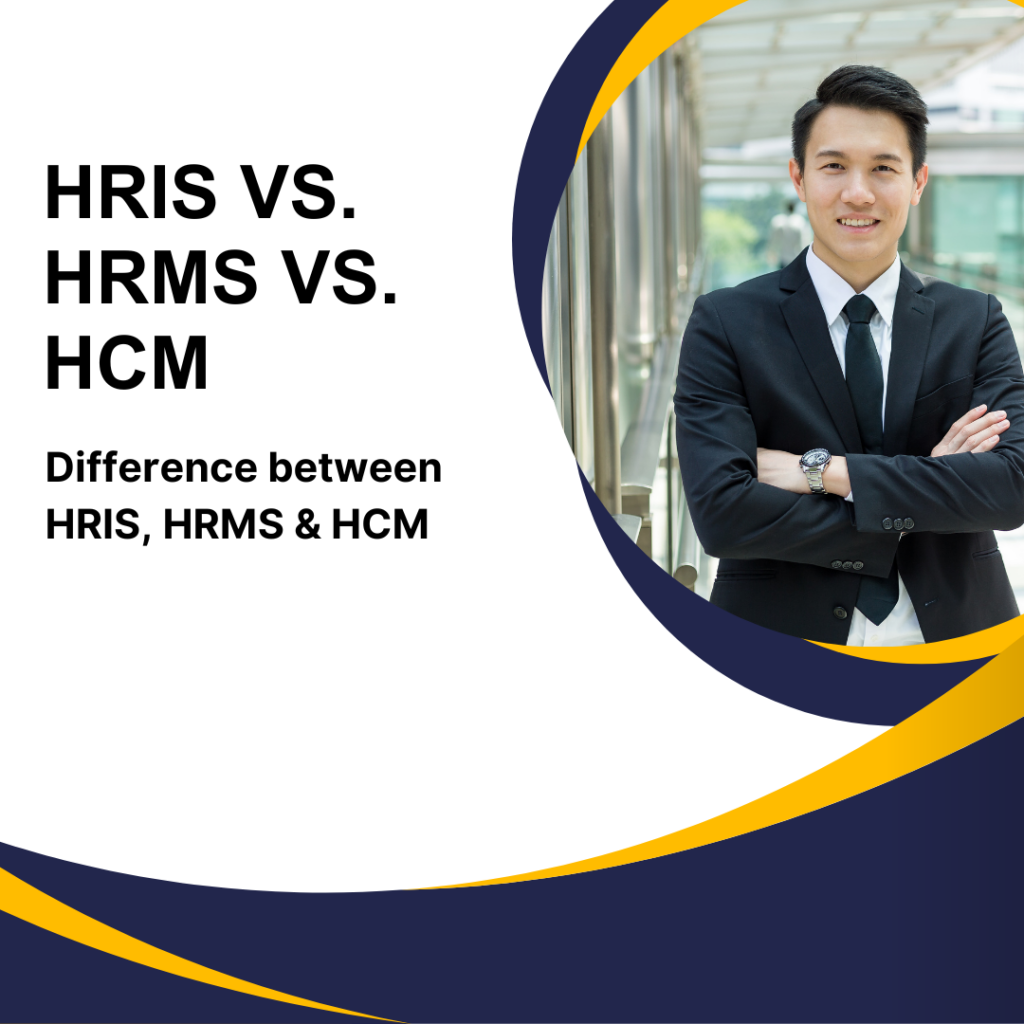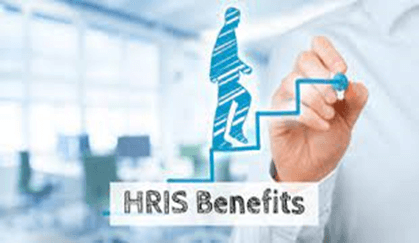
HRIS is a framework that has developed over the past thirty years from a basic data management system to a genuine decision-making support system. What is an HRIS system? Human Resource Information Systems (HRIS) may be described as a program or online platform used to enter, monitor, and manage all of the organization’s human resources activities. HR systems and procedures must adapt to a society that is data-driven, technology-driven and people-centred by means of the continuous digital flow. HRIS may be seen as a method for small and large companies to deal with a variety of tasks via software, including those relating to human resources, accounting, management and payroll. An HRIS enables a business to plan and manage its HR expenses more efficiently, without having to devote too many assets to them.

In most cases, an HRIS will also improve efficiency when HR decisions are made. Decisions taken should also improve quality — thus increasing and enhancing the efficiency of both workers and management. This is most feasible because of automation and synced data, which may minimise expensive redundancies and offer a trustworthy source of decisions accordingly.
As most HR teams utilize HRIS to assist organizations in better their operations and remain organized, it is essential that all HRIS employees are acquainted with a few fundamental HRISs, including HRIS variants, what HRIS is doing, which companies need HRIS and the best way of using HRIS.
What Does HRIS Stand for?
HRIS stands for the Information System for Human Resources. The HRIS is a computerized system that allows human resources managers to collect, organize, store, update and retrieve the information necessary to manage their workers. This allows a user-friendly and operating database that allows the seamless operation among all HR systems housed on the server, cloud or external vendors of the company.
Some people also describe this as a software suite designed to support data management experts. Professionals in human resources use these technologies to simplify workflow, boost productivity, store and gather information. Several businesses provide employers with HRIS solutions. HRIS solutions may be tailored to a particular employer’s needs and requirements.

Difference between HRIS vs. HRMS vs. HCM

HCM isn’t just a software kind. Human Capital Management is a collection of corporate practices or philosophies of human resources.
No matter if technological solutions are involved, HCM tries to optimise every phase of the life cycle of its employees. The notion is that the wider company requirements, whether talent acquisition, performance management or succession planning, are addressed at every stage.
On the other hand, HRIS and HRMS are acronyms particularly referring to software systems, the distinction being largely in their features and procedures.
HRMS contains modules to monitor and manage qualitative information for employees, including satisfaction and commitment to employees. HCM solution, on the other hand, includes the entire range of quantitative and quality employee performance and commitment.
What is HRIS Software and How Does it Help?
HRIS software contains the personnel database of a company. An HRIS tracks and analyses various information about your workers, previous employees and applicants’ employees such as payroll, performance, leave management and other fundamental characteristics.
An HRIS enables a business to plan and handle its HR expenses more efficiently without having to devote too many personnel. In most cases, an HRIS will also improve efficiency when HR decisions are made. Decisions taken should also improve quality—and therefore enhance and make the performance of both workers and management more effective. A lot may be done with HRIS, from the organisation and management of human data including:
· Demographic statistics of employees (date of birth, gender, contact information, etc)
· Job information for employees (designation, department, compensation package, etc)
· Inclusion of employee perks
· Time off and leave requirements for employees
Four main reports should be generated by HRIS software. The initial reports are reports focusing on individuals. These reports indicate the anniversaries, birthdays, calendars for performances, training calendars, recruiting and recruitment logs, the eligibility of benefits and registration, compliance data and more. The following main reports, job-oriented reports, provide information about workers’ specific work.
Work-focused reports indicate the completion of training, performance evaluation, remedial measures, performance development, completion of training and analysis of quality. The third main report is centred on money. These reports reflect the financial success of a company. It demonstrates this by displaying the distribution and process of payrolls, taxes, received benefits and reports, compensation plans and attendance reports. The last main reports, the results-oriented reports, provide summary information for stakeholders and operating teams. These reports take into account staff turnover and costs, gather data on present and future personnel management and examine the link between productivity and cost. These results reports also reflect information on company culture, quality and prices. These four main reports are simpler to gather with HRIS and provide businesses significant value.
Benefits OF HRIS System
The benefits of HRIS go beyond the advantages of HR. They are applicable across the whole company. Routine procedures streamlining and automating provides time and cost savings via efficiency. With your company, a well-designed cloud HR system may develop and expand into new markets and territories.

Customization
An HRIS is a record-keeping system that monitors changes relating to workers. The HRIS may be regarded as the only source of truth in terms of personal data. With the HRIS program in place, streamline the submission of information. A normal dragging and dropping form builder makes sure you can modify the form according to your requirements. You may scale the form fields using a decent HRIS software like Freshteam and make them accessible exclusively for specific teams or offices. For example, a ‘sales commission’ field may only be made accessible to workers and not to others.
Efficiency
It not only increases efficiency but also helps to save time because all this information is kept in one location. Some businesses still save a lot of data as tangible documentation regarding workers. It may take a lot of staff time to find the correct folder and to locate the relevant page. In comparison with manual or table record keeping, there is a significant gain. The HRIS supports rapid, accurate and automated processing across various activities, namely: management of staff and performance, management of leave and absence, payroll, compensation and benefits, acquisition and management of talent, management of workforce experience, HR and people analyses. You also have a piece of mind compliance with thorough and validated procedures that maintain correct and regulated records.
Employee Relations
Employee experience is the customer experience HR equivalent. A successful HRIS provides workers with access to corporate perks, timelines, corporate updates and efficient use of corporate resources that results in a healthy workforce. A user-friendly employee portal enables workers to explore their benefits options, check and update information, quickly ask for time off and get permission and learn about the culture of their business. That minimises calls and trips to the human resources office, enhances their feeling of empowerment and decreases waiting time annoyance. It may also make your onboarding process stress-free for new employees.
Better Insights of the Business
Make choices based on data to recruit, manage and retain staff. Learn how long you take to recruit a candidate, which are your best interviewer, and who are the most inexpensive HRIS, Freshteam, to do more. Sophisticated analytical capacity enables lead organisations, by analysing and predicting employee behaviour and trends, to extract strategic insights from their data, continuously monitoring and increasing productivity and engagement.
Time Saver
The recruitment process may sometimes be difficult since it goes via several parties. A good HRIS simplifies your job by providing the facilities to compare strengths of applicants and provide you a complete picture of the abilities and conduct of a candidate
Compliance
Some data are gathered and kept for purposes of compliance. This comprises identifying materials for robberies, fraud or other misconduct, first-contact information for accidents, citizens’ identity credentials for the tax office and the expiry of the compulsory certification dates. You may save all this information in the HRIS. Data must be safely and securely kept. HRIS suppliers offer the capacity to monitor changes in legislation and data security procedures to avoid mishaps.
Automation
Common HRIS technologies such as automation, analytics and artificial intelligence might assist reduce payroll, time and attendance labour expenses and other administrative works. Systems may plan events such as performance assessments and time limits, alert and boost automatically if actions have not been taken.
Decision Making
Some systems include forecasting and modelling, which may assist HR professionals to make educated choices. Managers can obtain the information they ought to plan, promote and maintain the performance of direct reports more quickly. This may contribute to commitment, morality and retention of employees and create succession plans to enhance development and innovation for the business. HRIS leads to improved HR decision-making efficiency. Although it is more difficult to qualify, such choices may also improve the quality and therefore improve the productivity of workers and managers by reducing the administrative load.
Integration of Data
In addition, many components of the system may “speak to each other” to provide more relevant reporting and analytical capabilities, including internal assessments and audits and data development for externals.
Tracking and Storage
You will never have to wrestle with an HRIS via file cabinets or seek through various kinds of tablets. You can simply gather, monitor, update and search for any snippet of information you need. For example, Collect and save papers inside the vault of a document in the profile of each employee in Freshteam. You may design the process for workers to gather these papers from new staff once they join your business. This may be accessible later by the employee and any other client who may require it via the self-service portal.
Features of HRIS

Centralized Structure
Human resource managers will be able to access spreadsheets and paper files for the first time thanks to an automated database that gathers, saves, and displays up-to-date and consistent information about an organization’s employees, policies, and processes. It will reduce redundancy and improve data integrity if all sensitive employee information is stored in a centralised cloud-based Human Resource Information System (HRIS).
Management of Recruitment
Success in recruiting is entirely dependent on the development of long-term connections with both prospective and existing workers. This feature offers a comprehensive applicant monitoring system, as well as a reporting engine, which allows you to evaluate recruiting trends and patterns more effectively.
Payroll
Many small and medium-sized enterprises (SMEs) currently utilise an independent system to handle their payroll operations. A personnel information system, often known as a human resource information system (HRI), may handle the payroll process from beginning to end. The human resource information system (HRI) can be easily linked with the accounting module and the presence management system. In addition to eliminating the need for manual reconciliation, this reduces the risk of human mistakes and the resulting legal and financial compliance problems.
Performance Management
A performance management module keeps track of how well workers are doing on a regular and measurable basis. Using it, the firm may verify that workers and departments from throughout the organisation are working together successfully to achieve the organization’s strategic objectives.
Employee Self-Service
Each and every HR procedure, from employee onboarding to reporting, will be made more effective with the help of a self-service site. Because multi-channel accessibility is built into the HRIS, workers may access, modify, and retrieve all work-related information from the convenience of their mobile phones.
HRIS Reporting
If you don’t know what is HRIS reporting, here is your answer. It provides real-time insights into an organization’s personnel through visually rich reporting modules. It is possible to use an HRIS solution that includes pre-defined reports to assist companies in creating a collaborative atmosphere that thrives on action and making a seamless link between insights, actions, and outcomes.
Time off Tracking
Managing employee timesheets, timetables, and attendance records by hand requires a significant amount of human resource work on the part of the employer. The task of keeping up with leave request emails and monitoring employee absences while also drawing up a plan to accommodate the always-changing workload is a monumental undertaking.
Employee Integration
The required documentation is eliminated from the integration equation via a cloud-based self-service portal. With scanned documents, automated workflow, a predefined checklist and simple to use digital forms, employees can finish the integration process in 15 minutes.

How Many Employees can an HRIS Handle?
It truly greatly depends on the system itself that you choose since not all organizations are equal. Some HRIS providers purchase a one-size-fits-all strategy that doesn’t fit anybody more often than not. These sellers claim their maximum number of users is almost limitless. The method usually works well for a company with about 25-500 workers.
HRIS Examples
Applicant Tracking
Most HRIS systems provide applicant tracking, where all curricula may be collected and stored by name and location in one spot. You can also filter abstracts using tools like automated rankings and keyword searches and assist to discover the perfect applicant for your position.
ADP WORKFORCE NOW
ADP Workforce Now is an all-in-one platform designed for mid-size companies to manage wages, talent, benefits, time, people, analytics and more.
FAQs
Who uses HRIS?
Employees include supervisors and data analyzers, prospective decision-makers, employees, system suppliers and those depending on the system for self-help at certain levels
Is HRIS a payroll?
Simply said, the HRIS system is the convergence of HR functions with IT. It provides data input and human resources, payroll and accounting monitoring and administration.
What are HRIS tools?
The HRIS systems include data input, data tracking, data analytics, and IT capabilities for addressing various departmental human resources requirements, including tracking applicants, onboarding, payroll, performance management, and accounting.
How does HRIS help payroll?
When an HRIS is utilised to pay, the system helps to handle overtime, attendance records and taxes automatically.
How does HRIS help recruitment?
It can make recruitment for many companies considerably simpler. Companies may quickly accept and resume online applications and filter those applications to the appropriate fields and managers through HRIS.
Conclusion
The usage of an HRIS is particularly useful for big companies that usually employ more sophisticated HRIS systems to serve various HR tasks. Small companies would fit a more basic HRIS. The workplace changes significantly as automated technologies progress. Human beings are increasingly collaborating in ever more complex ways alongside technology. The HRIS of the future will be more helpful and intuitive and facilitate workers’ easier, quicker and better outcomes in achieving their goals.